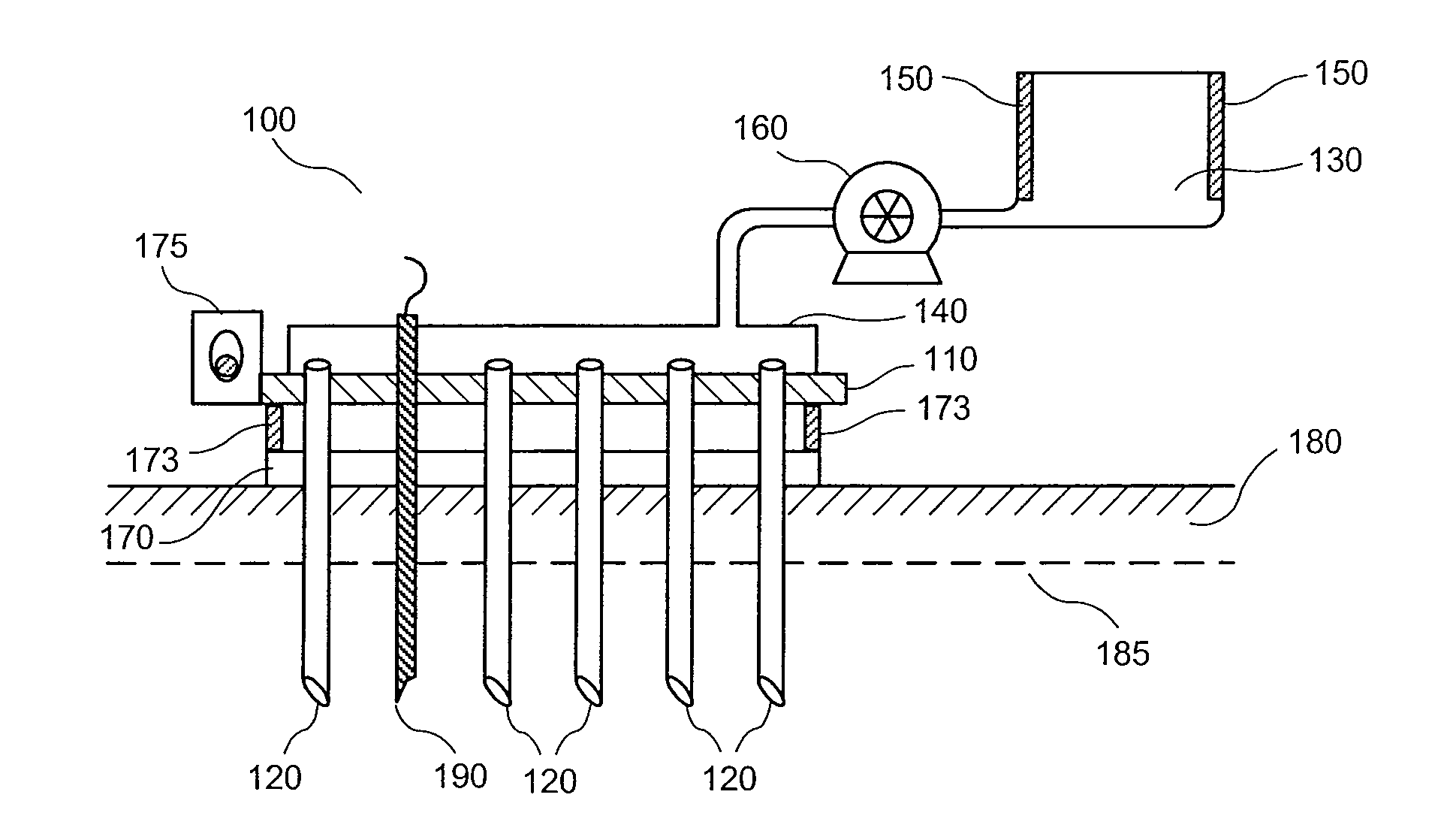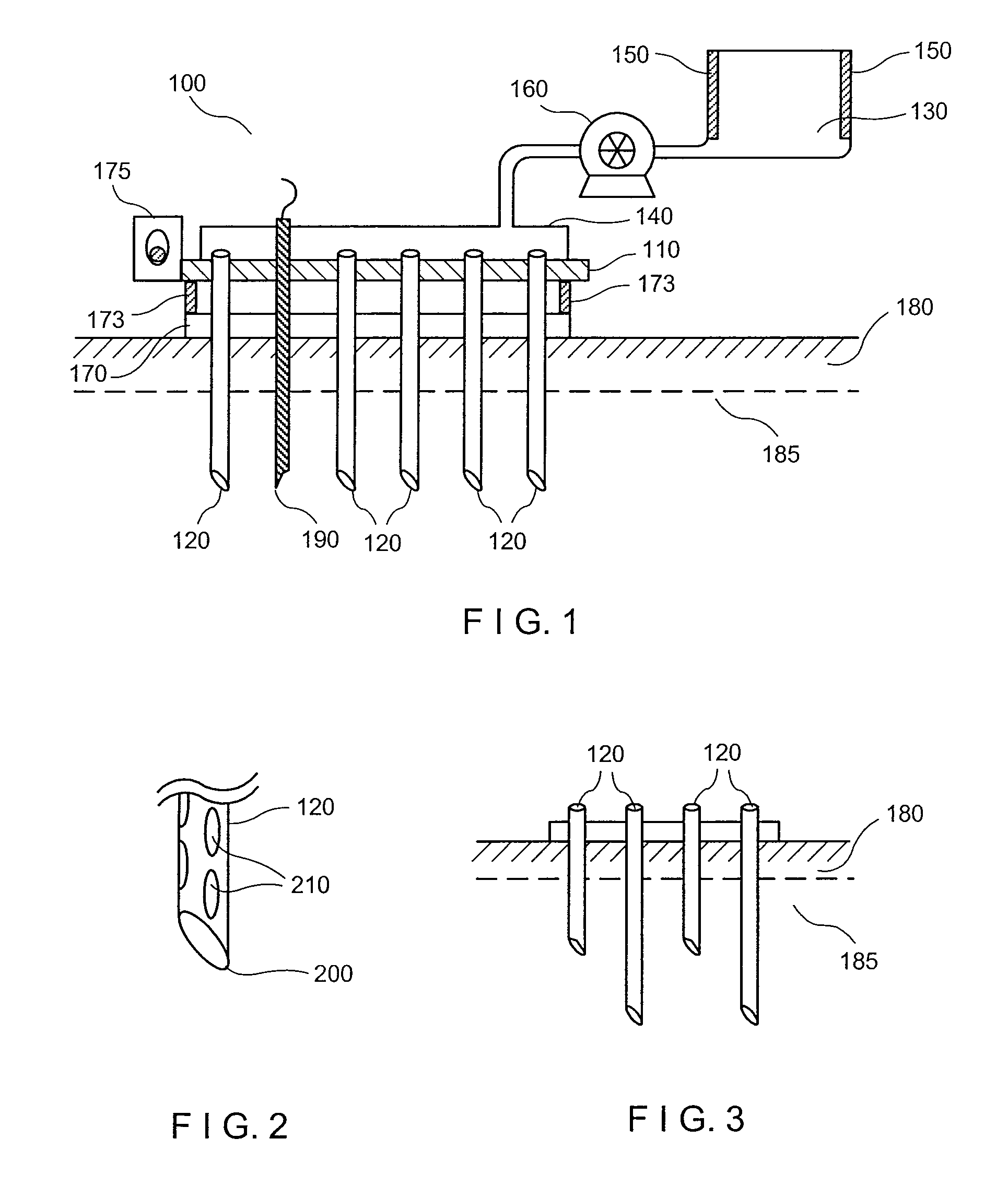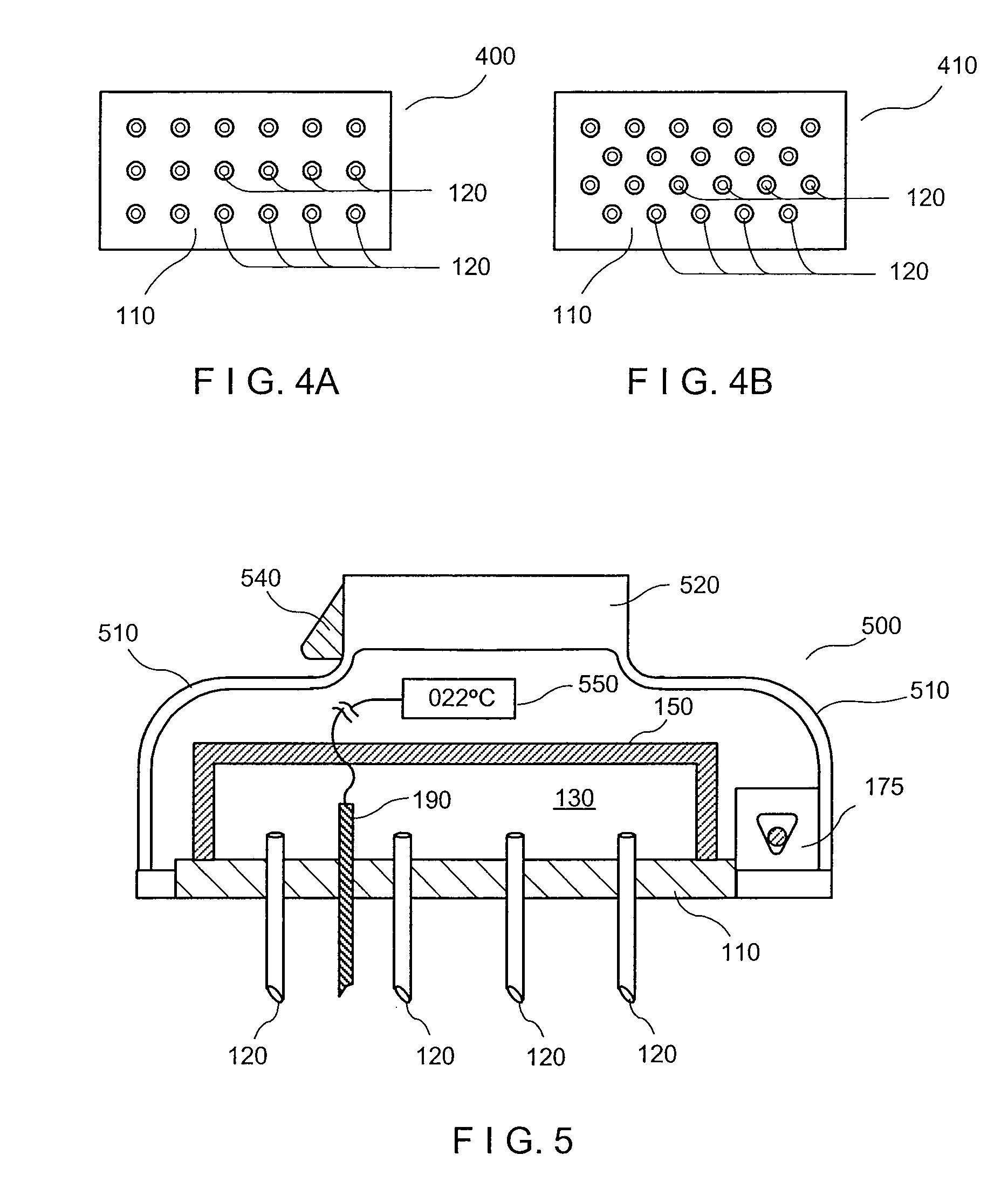Method and apparatus for cooling biological tissue
a biological tissue and apparatus technology, applied in the field of tissue cooling methods and apparatuses, can solve the problems of reducing the amount of fatty tissue present, affecting the treatment effect of patients, and affecting the treatment effect, so as to avoid undesirable side effects
- Summary
- Abstract
- Description
- Claims
- Application Information
AI Technical Summary
Benefits of technology
Problems solved by technology
Method used
Image
Examples
Embodiment Construction
[0016]Embodiments of the present disclosure are directed to methods and apparati for cooling tissue that can provide localized cooling of tissue below the tissue surface, while largely avoiding undesirable side effects, such as excessive cooling or freezing of the overlying tissue. For example, a cooled fluid can be dispersed directly within a target region of the tissue using, e.g., a plurality of hollow needles inserted into the skin. The hollow needles can be provided as a needle array that can be affixed to or coupled to a base or a substrate. The cooled fluid can include a saline solution, lidocaine, a detergent, an anti-inflammatory, and / or other components that can disrupt the targeted tissue and / or provide beneficial effects therein. The cooled fluid may also be liquid nitrogen.
[0017]A diameter of the hollow needles can be less than about 1000 μm, less than about 800 μm, less than about 500 μm, or even less than about 200 μm. A distance between the adjacent hollow needles ca...
PUM
 Login to View More
Login to View More Abstract
Description
Claims
Application Information
 Login to View More
Login to View More - R&D
- Intellectual Property
- Life Sciences
- Materials
- Tech Scout
- Unparalleled Data Quality
- Higher Quality Content
- 60% Fewer Hallucinations
Browse by: Latest US Patents, China's latest patents, Technical Efficacy Thesaurus, Application Domain, Technology Topic, Popular Technical Reports.
© 2025 PatSnap. All rights reserved.Legal|Privacy policy|Modern Slavery Act Transparency Statement|Sitemap|About US| Contact US: help@patsnap.com



